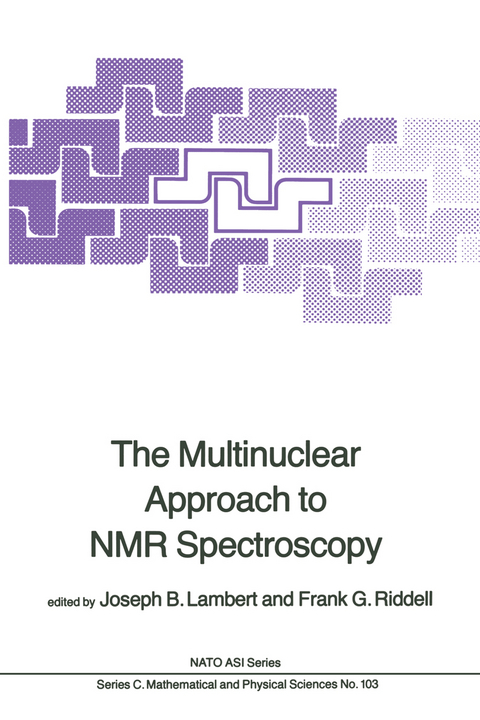
The Multinuclear Approach to NMR Spectroscopy
Springer (Verlag)
978-94-009-7132-5 (ISBN)
The field of nuclear magnetic resonance has experienced a number of spectacular developments during the last decade. Fourier transform methodology revolutionized signal acquisition capabilities. Superconducting magnets enhanced sensitivity and produced considerable improvement in spectral dispersion. In areas of new applicat ions, the life sciences particularly bene fited from these developments and probably saw the largest increase in usage. NMR imaging promises to offer a noninvasive alternative to X rays. High resolution is now achievable with solids, through magic angle spinning and cross polarization, so that the powers of NMR are applicable to previously intractable materials such as polymers, coal, and other geochemicals. The ease of obtaining relaxation times brought an important fourth variable, after the chemical shift, the coupling constant, and the rate constant, to the examination of structural and kinetic problems i~ all fields. Software development, particularly in the area of pulse sequences, created a host of useful tech niques, including difference decoupling and difference nuclear Overhauser effect spectra, multidimensional displays, signal enhancement (INEPT), coupling constant analysis for connectivity (INADEQUATE), and observation of specific structural classes such as only quaternary carbons. Finally, hardware development gave us access to the entire Periodic Table, to the particular advan tage of the inorganic and organometallic chemist. At the NATO Advanced Study Institute at Stirling, Scotland, the participants endeavored to examine all these advances, except imaging, from a multidisciplinary point of view.
1. High Resolution Multinuclear Magnetic Resonance: Instrumentation Requirements and Detection Procedures.- 2. The Calculation and Some Applications of Nuclear Shielding.- 3. Calculations of Spin-Spin Couplings.- 4. Relaxation Processes in Nuclear Magnetic Resonance.- 5. Dynamic NMR Processes.- 6. Nuclear Magnetic Resonance in Solids.- 7. Applications of High Resolution Deuterium Magnetic Resonance.- 8. Deuterium NMR of Anisotropic Systems.- 9. Tritium Nuclear Magnetic Resonance Spectroscopy.- 10. Nitrogen Nuclear Magnetic Resonance Spectroscopy.- 11. Application of 17O NMR Spectroscopy to Structural Problems.- 12. The Alkali Metals.- 13. Alkaline Earth Metals.- 14. The Alkaline Earth Metals—Biological Applications.- 15. Group III Atom NMR Spectroscopy.- 16. Solution-State NMR Studies of Group IV Elements (Other than Carbon).- 17. High Resolution Solid-State NMR Studies of Group IV Elements.- 18. Group V Atom NMR Spectroscopy Other than Nitrogen.- 19. Group VI Elements Other than Oxygen.- 20. The Halogens—Chlorine, Bromine, and Iodine.- 21. Transition Metal NMR Spectroscopy.- 22. Cadmium-113 Nuclear Magnetic Resonance Spectroscopy in Bioinorganic Chemistry. A Representative Spin 1/2 Metal Nuclide.- Participants.
| Reihe/Serie | NATO Science Series C ; 103 |
|---|---|
| Zusatzinfo | XVI, 548 p. |
| Verlagsort | Dordrecht |
| Sprache | englisch |
| Maße | 160 x 240 mm |
| Themenwelt | Mathematik / Informatik ► Mathematik ► Algebra |
| ISBN-10 | 94-009-7132-X / 940097132X |
| ISBN-13 | 978-94-009-7132-5 / 9789400971325 |
| Zustand | Neuware |
| Haben Sie eine Frage zum Produkt? |
aus dem Bereich


